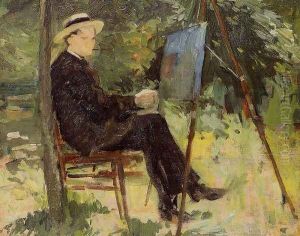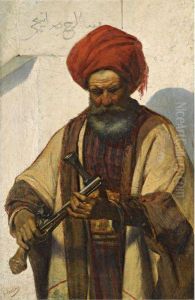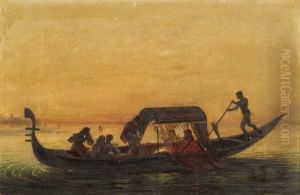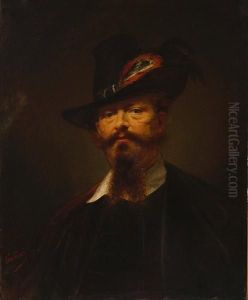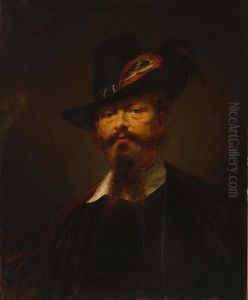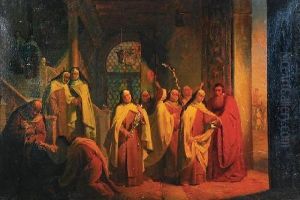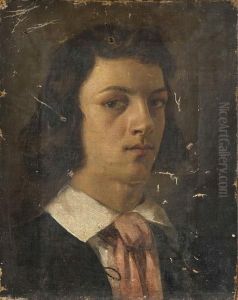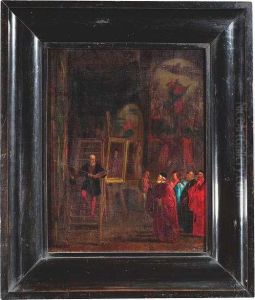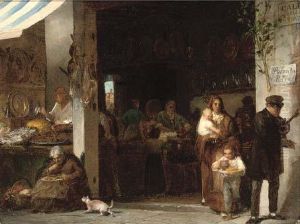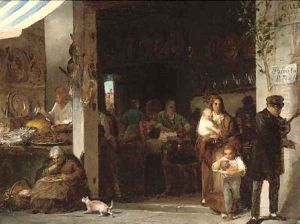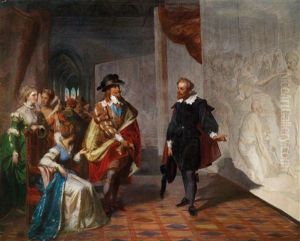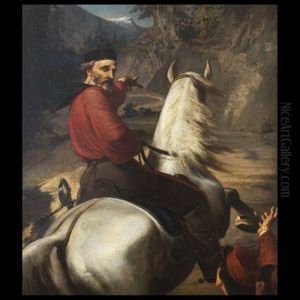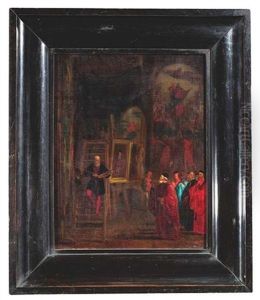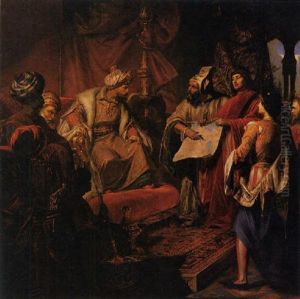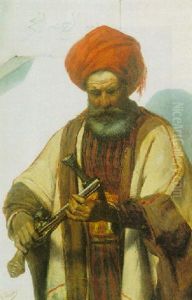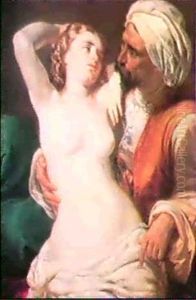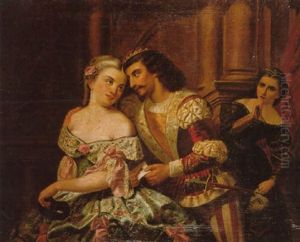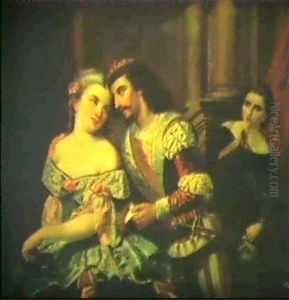Giulio Carlini Paintings
Giulio Carlini was an Italian painter, primarily known for his works in the genre of history painting, as well as his contribution to religious and mythological themes. Born on August 9, 1826, in Venice, Italy, Carlini was a representative figure in the Italian art scene during the 19th century. He studied at the Accademia di Belle Arti di Venezia, where he was influenced by the Venetian painting tradition, especially by the works of the Renaissance masters.
During his career, Carlini developed a distinctive style that combined the grandeur of historical themes with a fine attention to detail and color. His paintings often featured dramatic compositions and were infused with a sense of romanticism, which was characteristic of the period. He gained recognition for his skillful portrayal of scenes from ancient history and literature, executing works that captured the imagination of his contemporaries.
Carlini's contributions to art were not limited to his own creations. He was also an influential teacher at the Accademia di Belle Arti di Venezia, where he nurtured the next generation of Italian artists. His role as an educator helped to propagate the traditional techniques and aesthetics of the Venetian school during a time of transition and innovation in the art world.
Despite his achievements, Giulio Carlini's works are less known today compared to some of his contemporaries. Nevertheless, his paintings remain a testament to the rich artistic heritage of Italy and offer insight into the cultural and historical milieu of his time. Carlini passed away on March 1, 1887, in Venice, leaving behind a legacy that continues to be studied and appreciated by art historians and enthusiasts.
